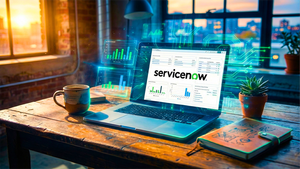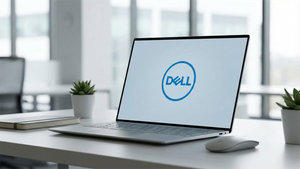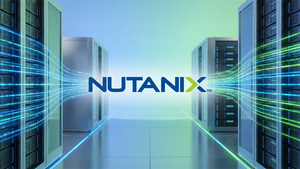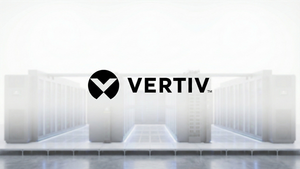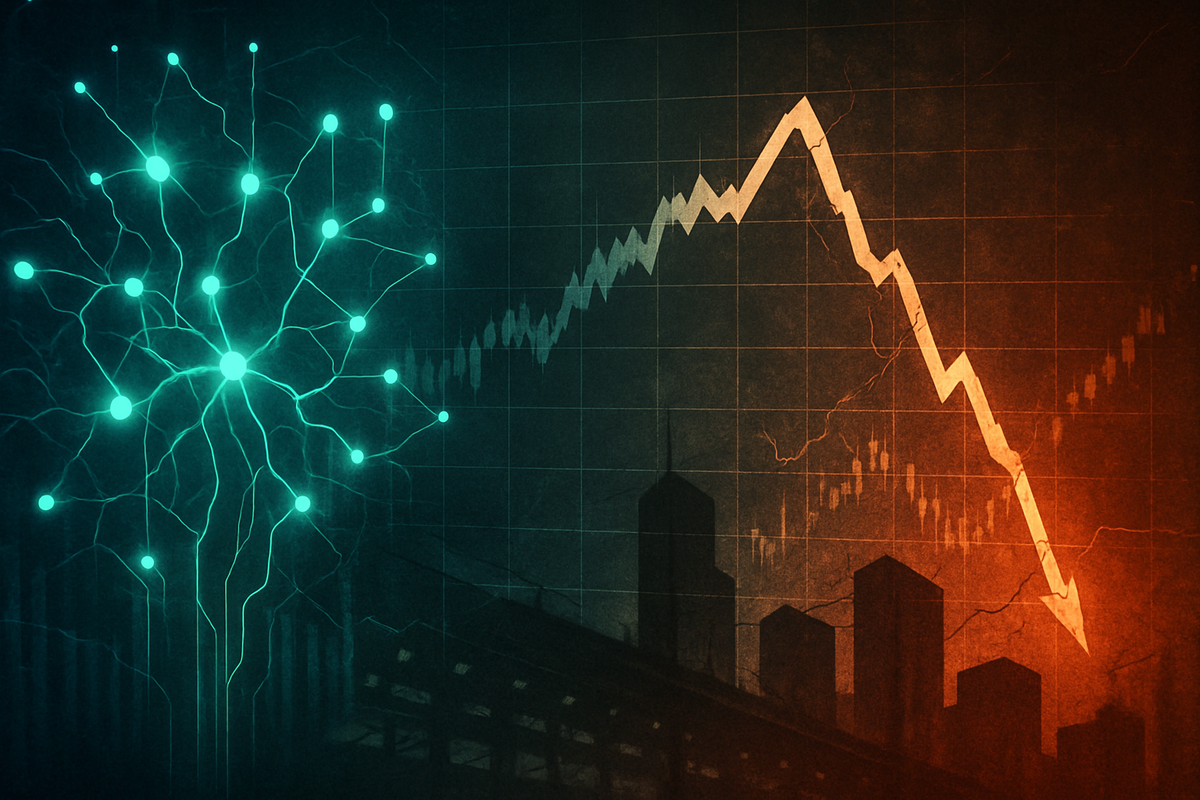
Goldman Sachs (NYSE: GS) CEO David Solomon has issued a stark warning regarding the potential for an an AI-driven stock market drawdown, drawing parallels to the speculative fervor of the Dotcom Bubble. Speaking at Italian Tech Week on Friday, October 3, 2025, Solomon articulated concerns that the rapid acceleration of new technology, specifically artificial intelligence, is leading to substantial capital formation that could push market valuations beyond sustainable fundamentals. His remarks suggest an impending market correction within the next 12 to 24 months.
Despite the cautionary tone from one of Wall Street's most influential figures, immediate market reactions on the very day of his comments appeared to defy the warning. Dow Futures rose, alongside an increase in S&P 500 futures, largely propelled by continued strength in prominent AI-related stocks such as Tesla (NASDAQ: TSLA), Nvidia (NASDAQ: NVDA), Boeing (NYSE: BA), and Chevron (NYSE: CVX). This seemingly contradictory response highlights the ongoing bullish sentiment surrounding AI, even in the face of high-level concerns about overvaluation.
Detailed Coverage: Solomon's Sobering Assessment at Italian Tech Week
Goldman Sachs Chairman and CEO David Solomon delivered his significant warning at Italian Tech Week in Turin on Friday, October 3, 2025, during a period when major stock indices, including the S&P 500, Nasdaq Composite, and Dow Jones Industrial Average, had recently soared to new record highs. His message served as a crucial counterpoint to the prevailing market euphoria surrounding artificial intelligence. Solomon explicitly stated, "You're going to see a similar phenomenon here. I wouldn't be surprised if in the next 12 to 24 months, we see a drawdown with respect to equity markets." He further elaborated on the potential for misallocated investment, noting, "I think that there will be a lot of capital that's deployed that will turn out to not deliver returns, and when that happens, people won't feel good."
The Goldman Sachs chief likened the current AI-driven market excitement to historical technology cycles, drawing a direct parallel to the Dotcom Bubble of the late 1990s and early 2000s. He emphasized that while new technologies spur significant capital formation and create innovative companies, "you generally see the market run ahead of the potential… there are going to be winners and losers." This historical comparison underscores his belief that despite AI's transformative power, the market's current valuation of AI-related assets may be inflated, setting the stage for an inevitable correction. His caution was not to dismiss AI's fundamental reality but to temper the prevalent exuberance and prepare investors for a more rational market environment.
Beyond the immediate concerns about AI, Solomon also touched upon broader economic and financial themes. He highlighted the need for more efficient channeling of European savings into the "risk economy" and the tech ecosystem, criticizing the slow pace of European regulatory processes. Internally, Goldman Sachs plans to spend $6 billion on technology investments this year, with a desire to increase that to $8 billion if feasible, indicating the firm's own commitment to technological advancement. Solomon also offered a more optimistic outlook on the US economy, predicting acceleration into 2026, and noted an uptick in mergers and acquisitions (M&A) and capital markets activity, a positive shift from the decade-low in investment banking seen in late 2022 and early 2023.
Italian Tech Week 2025, held from October 1-3, featured a distinguished roster of global tech and business leaders. Notably, Amazon (NASDAQ: AMZN) founder Jeff Bezos, in a fireside chat with John Elkann (CEO of Exor and Chairman of Stellantis and Ferrari), echoed Solomon's cautionary sentiment regarding AI. Bezos, too, described AI as being in an "industrial bubble" but reaffirmed the technology's fundamental reality and its potential to revolutionize every industry. Other prominent speakers included Ursula von der Leyen, President of the European Commission, and Kevin Scott, CTO of Microsoft (NASDAQ: MSFT). The shared apprehension from such influential figures about the current AI market dynamic underscores the gravity of Solomon's warning and suggests that the market implications of AI were a central theme of discussion among the 15,000 anticipated visitors.
Companies Navigating the AI Tide: Winners and Losers in a Potential Drawdown
Goldman Sachs CEO David Solomon's warning of an impending AI-driven market drawdown highlights a critical juncture for public companies, signaling a period where robust fundamentals and clear monetization strategies will distinguish the resilient from the vulnerable. Similar to the Dotcom Bubble, Solomon anticipates a landscape of "winners and losers" as the AI market matures, forcing a re-evaluation of inflated valuations and speculative ventures.
Potential Winners in such a scenario are predominantly companies with established market positions, diversified AI offerings, and essential infrastructure that underpins the AI revolution. Firms like Nvidia (NASDAQ: NVDA), a leader in GPUs crucial for AI training and inference, are well-positioned due to their foundational role and strong data center revenue. Similarly, cloud service giants such as Microsoft (NASDAQ: MSFT) with Azure, Alphabet (NASDAQ: GOOGL, GOOG) with Google Cloud, and Amazon (NASDAQ: AMZN) with AWS, are investing heavily in AI infrastructure, including proprietary chips and strategic startup funding. Their strong balance sheets and integrated AI strategies across their business units provide a significant buffer against market turbulence. Other key infrastructure players like Advanced Micro Devices (NASDAQ: AMD), Taiwan Semiconductor Manufacturing (NYSE: TSM), Marvell Technology (NASDAQ: MRVL), and Micron Technology (NASDAQ: MU) are also likely to weather a drawdown due to their critical role in supplying the hardware necessary for AI. Companies like Palantir Technologies (NYSE: PLTR), which specialize in data analytics and AI platforms, and those effectively adopting AI to enhance operations, improve efficiency, or create new services, are also poised to benefit from their practical applications and demonstrated ROI.
Conversely, Potential Losers will likely include companies with overinflated valuations not yet justified by tangible AI-driven earnings, or those with unsustainable growth models. Any AI company, regardless of its segment, whose stock price has soared purely on speculative enthusiasm without a clear path to profitability, faces a significant correction. Hyperscalers with strained margins due to massive capital expenditures on AI infrastructure that don't yield expected returns could also see their valuations suffer. Furthermore, companies involved in "circular deals" – where major players invest in AI startups while simultaneously supplying them with chips – might face intense scrutiny if these arrangements lack genuine market demand. Beyond direct AI players, incumbent software companies with rigid business models struggling to adapt to AI-driven, outcomes-based pricing models, and businesses across various sectors failing to integrate AI effectively into their operations, risk being outcompeted. An MIT report highlighted that 95% of AI pilot projects fail to yield meaningful results; companies that cannot demonstrate clear ROI from their AI spending are particularly vulnerable.
The impact on stock performance will likely see heightened volatility, with a "flight to safety" towards companies with robust fundamentals and proven AI revenue streams. Their recovery post-drawdown is expected to be faster and more robust, offering long-term buying opportunities. Business models will be forced to evolve, with a shift towards outcomes-based and consumption-based AI services, focusing on efficiency, automation, and new revenue streams from hyper-personalization and data monetization. Investment strategies will become more cautious, prioritizing infrastructure and enablers, demanding greater ROI transparency, and emphasizing diversification and risk management rather than concentrated bets on speculative ventures. Solomon's warning serves as a crucible, separating the genuinely transformative AI companies from those merely riding the hype cycle.
Wider Significance: Echoes of the Past, Shaping the Future
David Solomon's warning from Goldman Sachs reverberates through the financial markets, not merely as a cautionary tale but as a significant marker in the broader narrative of technological advancement and market speculation. His analogy to the Dotcom Bubble places the current AI frenzy within a historical context, prompting a re-evaluation of investment strategies and highlighting potential systemic risks. This event fits squarely into the ongoing debate about the sustainability of current AI valuations and the long-term impact of this transformative technology.
The warning underscores a critical broader industry trend: the pervasive concern about an "AI bubble." For months, analysts have grappled with surging valuations for AI companies, with some experts noting that current market exuberance is "not too far off the dot-com highs." Solomon's comments intensify scrutiny on the massive capital expenditures by tech giants into AI infrastructure, questioning whether these investments will truly "bear fruit" or if companies are "nowhere close to recouping their investments." The increasing reliance on debt by some firms to fund this buildout, exemplified by large bond deals, adds another layer of vulnerability, potentially breaking the pattern of AI investment primarily funded by the profits of dominant tech players. This scenario will inevitably accelerate the process of distinguishing "winners and losers," favoring companies with scalable, ROI-driven AI strategies over speculative bets.
The ripple effects of such a warning, and a potential subsequent drawdown, would be profound across competitors and partners. Other financial institutions would likely follow Goldman Sachs' lead in scrutinizing their AI-related exposures, potentially leading to a more conservative lending environment for AI startups and tighter underwriting standards for IPOs in the tech sector. For tech competitors, companies heavily invested in AI with high valuations and limited profitability would face immense pressure. Chipmakers like Nvidia (NASDAQ: NVDA), whose revenues have "exploded" due to AI demand, could see a slowdown if the "AI infrastructure buildout" demand wanes. Hyperscalers like Amazon (NASDAQ: AMZN), Microsoft (NASDAQ: MSFT), Alphabet (NASDAQ: GOOGL, GOOG), and Meta Platforms (NASDAQ: META), which are pouring hundreds of billions into AI infrastructure, would face greater scrutiny on their capital expenditure plans and the tangible returns from these investments. The broader ecosystem, including data center operators and AI software providers, would experience a slowdown in demand and funding, potentially impacting job markets within the tech sector and accelerating consolidation.
From a regulatory and policy standpoint, a significant AI-driven market drawdown would almost certainly trigger increased scrutiny. Regulators might investigate speculative activities, "circular financing" deals (where companies invest in their own customers), and inflated valuations within the AI sector, leading to calls for enhanced transparency and corporate governance. Financial stability bodies, like the IMF, already fear that AI could "exacerbate traditional financial stability channels such as interconnectedness, liquidity, and leverage," prompting deeper analysis into how AI-driven trading algorithms or interconnected financial products might amplify market shocks. Policymakers would face the delicate challenge of balancing the need to foster technological innovation with the imperative of maintaining market stability, potentially leading to measures aimed at protecting retail investors from speculative frenzies, reminiscent of discussions following events like the GameStop short squeeze.
What Comes Next: Navigating the AI Crossroads
Goldman Sachs CEO David Solomon's nuanced warning, delivered on October 3, 2025, paints a picture of short-term market volatility followed by long-term AI-driven economic acceleration. While he anticipates a "correction" in the U.S. stock market within the next 12 to 24 months, he views this as a normal part of the cycle, particularly for large AI-driven tech stocks, maintaining an optimistic outlook for the overall U.S. economy accelerating into 2026, fueled by government spending and AI infrastructure build-out. This perspective suggests a critical period of adjustment for the market and individual companies.
In the short-term, the market is likely to experience increased volatility and potential sell-offs, especially in highly valued, speculative AI-related stocks. Investors may engage in sector rotation, shifting capital from unproven AI ventures to more defensive sectors or companies with strong fundamentals and manageable debt. This period could see significant corrections in overvalued AI stocks, particularly those whose valuations are not yet supported by tangible earnings or viable business models, echoing an MIT report that 95% of companies investing in generative AI have yet to see financial returns. However, for discerning investors, a market correction also presents tactical buying opportunities in fundamentally sound companies that become undervalued. A drawdown could also lead to a temporary drying up of venture capital funding for early-stage and unprofitable AI startups, forcing a re-evaluation of business models.
Long-term, the AI landscape is expected to emerge healthier and more disciplined. A market correction would likely force AI companies to prioritize profitability and sustainable business models over rapid growth fueled by speculative investment. This environment favors stronger, well-capitalized tech giants like Nvidia (NASDAQ: NVDA), Microsoft (NASDAQ: MSFT), and Amazon (NASDAQ: AMZN), which are better positioned to weather downturns and potentially acquire struggling innovators. The underlying demand for AI compute, data centers, and related hardware is expected to continue, reinforcing the ongoing AI infrastructure build-out. AI's long-term potential as a general-purpose technology with pervasive economic impact remains significant, with companies that successfully integrate AI to drive productivity and create measurable economic value ultimately thriving.
Strategic pivots for businesses will be crucial. Companies must reassess their core strengths and value propositions, focusing on operational efficiency and cost-cutting in a tightened capital environment. Business model adjustments, such as adopting outcomes-based or consumption-based pricing for AI services, will be necessary. The emphasis on digital transformation will shift towards initiatives that demonstrate clear returns on investment. Strengthening balance sheets and maintaining financial discipline will be paramount. Market opportunities will emerge for value investors to acquire fundamentally sound companies at a discount, and for "pick-and-shovel" plays – companies providing essential tools and services for AI development. Challenges include the persistent risk of overvaluation, the narrow market breadth concentrated in a few tech giants, and increased scrutiny from regulators and antitrust bodies. Potential scenarios range from a "soft landing" correction, where the market experiences a temporary dip before recovering, to a more severe "Dot-Com 2.0" bubble burst, involving a prolonged period of market recovery and widespread bankruptcies among unproven AI companies. A two-tiered market evolution, where dominant AI giants continue to grow while smaller firms struggle, is also a distinct possibility. Ultimately, the period following Solomon's warning will be a test of resilience, separating sustainable AI ventures from speculative froth.
Wrap-Up: Navigating the AI Crossroads with Caution
Goldman Sachs CEO David Solomon's warning on October 3, 2025, serves as a crucial inflection point for a market increasingly captivated by the promise of artificial intelligence. His anticipation of a stock market drawdown within the next 12 to 24 months, driven by "excessive exuberance" around AI, signals a necessary recalibration rather than an outright rejection of the technology's transformative power. This caution from a leading voice in global finance adds significant weight to ongoing concerns about market frothiness, urging investors to re-evaluate their positions on the "risk curve."
The key takeaways from Solomon's statement emphasize that while AI represents a "long-term revolution" capable of driving unprecedented productivity and growth, the current pace of capital deployment in the sector may not always translate into proportionate returns. This creates a widening "AI value gap," where only a fraction of companies truly generate substantial value from their AI investments. The market's current elevated valuations, fueled by strong investor confidence and significant investments from tech giants, are increasingly being met with skepticism from experts who point to historical parallels with past tech bubbles.
Assessing the market moving forward, a bifurcated landscape is evident. On one hand, the bullish sentiment persists, with record valuations for AI leaders like OpenAI, Nvidia (NASDAQ: NVDA), and Microsoft (NASDAQ: MSFT), alongside Goldman Sachs' own forecast of the S&P 500 to reach 6,900 by 2025, driven by AI. On the other hand, warnings like Solomon's, coupled with concerns about "overhyped expectations" and the sheer scale of capital expenditure required for AI infrastructure, suggest an elevated risk of a near-term correction. The immense power demands of AI data centers, creating a "power bottleneck," further highlight the practical challenges that must be overcome for sustained growth.
The significance and lasting impact of such a drawdown, should it materialize, are likely to be a "healthy reset" for the market. It would serve to reprice assets to reflect more realistic earnings and growth expectations, effectively weeding out speculative ventures and allowing for more sustainable, fundamentals-driven growth. The underlying drivers of AI adoption, infrastructure buildout, and digital transformation remain robust, positioning AI as a long-term megatrend. The focus will shift more acutely towards identifying companies that are genuinely generating value from AI, rather than simply investing heavily in it.
What investors should watch for in coming months includes scrutinizing company earnings reports to ensure AI investments are translating into tangible revenue and profit growth. Regulatory developments, including antitrust reviews and policy uncertainty, could introduce abrupt market shifts. Monitoring interest rate policies and macroeconomic data will be crucial, as any deviation from current expectations could impact market sentiment. Furthermore, attention to energy infrastructure and supply chains is vital, given the substantial energy requirements of AI. Investors should prioritize differentiation among AI players, seeking companies with clear monetization paths and operational resilience, and watch for technical market signals of fatigue. While a correction may be painful, maintaining a long-term perspective and employing strategies like dollar-cost averaging can present opportunities to expand positions in fundamentally strong companies tied to the enduring AI megatrend.
This content is intended for informational purposes only and is not financial advice

